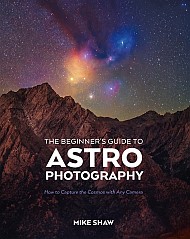Astronomy
Ultracold clocks could reveal how quantum physics alters time
Weaver Ants Form Complex Chains to Pull More Than 100 Times Their Weight
When more humans are added to a team, each member accomplishes less work—but teams of weaver ants do better and better as more join
Extraordinary pictures show what a common antibiotic does to E. coli
Extraordinary pictures show what a common antibiotic does to E. coli
Endangered Sharks Caught in Rare Mating Ritual beneath the Waves
The Food and Drug Administration plans to update the safety label for acetaminophen products, and the strongest storm on Earth this year struck several countries in East and Southeast Asia.
Taking Tylenol While Pregnant Is Safer Than Untreated Fevers, Doctors Say
Untreated fevers during pregnancy can cause more harm than taking acetaminophen will
People Are More Likely to Cheat When They Use AI
Participants in a new study were more likely to cheat when delegating to AI—especially if they could encourage machines to break rules without explicitly asking for it
Two-in-one inhalers slash asthma attacks among young children
Two-in-one inhalers slash asthma attacks among young children
Lab-Grown Organoids Could Transform Female Reproductive Medicine
Artificial tissues that mimic the placenta, endometrium, ovary and vagina could point to treatments for common conditions such as preeclampsia and endometriosis
An Impact Between Equals Could Solve The "Mercury Problem"
Mercury's large metallic core is 70% of its mass, which is way more than the other rocky planets. Scientists have wondered if a collision with a much larger body stripped away much of its mantle and crust, and Mercury is only the remnant core of a once much larger planet. New simulations show that's not quite what happened.
This Rapidly-Growing Black Hole Could Explain The JWST's Puzzling Findings
NASA's Chandra X-ray space telescope has found a black hole that's growing at an extremely rapid pace. The telescope is seeing the black hole, which has about one billion solar masses, when the Universe was less than one billion years old. Studying its rapid accretion could explain how some black holes become so massive so soon after the Big Bang.
Defining Life With Constants From Physics
What is the meaning of life? Even the best of us couldn’t hope to answer that question in a universe today article. But there are those who would try to “constrain” it, at least in terms of physics. A new paper from Pankaj Mehta of Boston University of Jané Kondev of Brandeis that was recently pre-published on arXiv looks at how the fundamental constants of physics might be applied to life as we know it - and even life as we don’t know it yet. Their idea doesn't necessarily give the answer to the ultimate question, but it does tie two seemingly disparate fields nicely together.
Finding Exomoons Using Their Host Planet's Wobble
Exoplanets aren’t the only objects floating around other stars - they likely have comets and asteroids as well. Even some of the exoplanets themselves will have “exomoons”, at least according to our current understanding of the physics of planetary formation. However, we have yet to find any of these other objects conclusively, though there has been some hint at the presence of exomoons in the last ten years. A new paper from astronomers at the European Southern Observatory (ESO), recently pre-published on arXiv, suggests a way in which we might be able to finally detect the presence of an exomoon - using a technique that is also commonly used to find exoplanets themselves.
The Search for Australia's Hidden Impact Crater
A team of scientists in south Australia have discovered tiny pieces of glass that tell the story of a catastrophic event that happened 11 million years ago, an asteroid impact so massive it should have left a crater the size of a major city, yet mysteriously, no one has found it. This discovery represents only the sixth known tektite field ever identified on Earth. The glassy fragments, scattered across the landscape are forcing scientists to reconsider what they know about ancient asteroid impacts and the geological features they leave behind.
Hurricane Humberto and Potential Tropical Storm Imelda Complicate Forecasts
Hurricane Humberto and a system that may become Tropical Storm Imelda in the coming days are swirling quite close to each other in the western Atlantic Ocean


